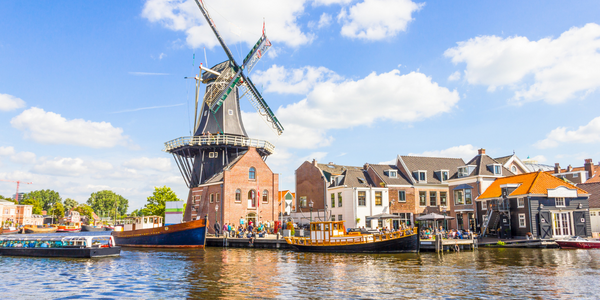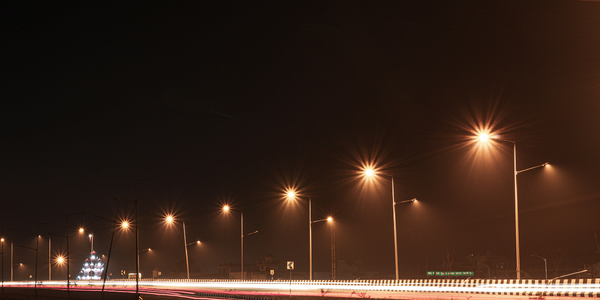技术
- 应用基础设施与中间件 - 区块链
- 传感器 - 空气污染传感器
适用行业
- 城市与自治市
- 运输
适用功能
- 物流运输
- 质量保证
用例
- 地理围栏
- 室内空气质量监测
服务
- 测试与认证
关于客户
福特是一家跨国汽车制造商,一个多世纪以来一直是汽车行业的先驱。该公司致力于创造卓越的产品,为更美好的世界做出贡献。作为可持续发展承诺的一部分,福特一直在探索插电式混合动力电动汽车 (PHEV) 改善城市中心空气质量的潜力。他们一直在伦敦、科隆和巴伦西亚等城市进行广泛的研究和测试,使用福特全顺车辆作为市政和商业车队。福特致力于通过绿色交通改造城市,并正在采取重大步骤在全球推广电动汽车。
挑战
福特开展了一项为期三年的研究,探索商用插电式混合动力电动汽车 (PHEV) 在提高城市中心空气质量方面的潜力,为生态友好型城市交通提供解决方案。该研究使用福特全顺车辆作为伦敦、科隆和巴伦西亚的市政和商业车队,收集了超过 400,000 公里的数据。主要目标是了解如何将地理围栏和区块链技术与电动汽车结合使用,以改善城市空气质量。我们面临的挑战是找到一种方法在特定区域实现零排放,从而改善最需要的空气质量。
解决方案
福特利用 Tomorrow.io 的空气质量数据在科隆市进行了动态地理围栏试点,以触发零排放。福特 Transit Custom PHEV 是该公司在全球推动电动汽车发展的第一步。该公司意识到将插电式混合动力汽车与 Tomorrow.io 等技术相结合以优化城市地区空气质量的巨大潜力。福特的地理围栏功能可以帮助城市在最需要的地方最大限度地提高空气质量效益。例如,车辆的零排放电动驱动模式可以在进入低排放区域时自动激活,无需驾驶员干预。它还可以由来自 Tomorrow.io 的 API 的空气质量警告触发。
运营影响
数量效益

Case Study missing?
Start adding your own!
Register with your work email and create a new case study profile for your business.
相关案例.

Case Study
Turning A Stadium Into A Smart Building
Honeywell created what it called the “intelligent system” for the National Stadium in Beijing, China, turning the venue for the opening and closing events at the 2008 Summer Olympics into a “smart building.” Designed by highly controversial artist Ai Weiwei, the “Bird’s Nest” remains one of the most impressive feats of stadium architecture in the world. The 250,000 square meter structure housed more than 100,000 athletes and spectators at a time. To accommodate such capacity, China turned to Honeywell’s EBI Integrated Building Management System to create an integrated “intelligent system” for improved building security, safety and energy efficiency.
.png)
Case Study
Smart Street Light Network (Copenhagen)
Key stakeholders are taking a comprehensive approach to rethinking smart city innovation. City leaders have collaborated through partnerships involving government, research institutions and solution providers. The Copenhagen Solutions Lab is one of the leading organizations at the forefront of this movement. By bringing together manufacturers with municipal buyers, the Copenhagen Solutions Lab has catalyzed the development and deployment of next-generation smart city innovations. Copenhagen is leveraging this unique approach to accelerate the implementation of smart city solutions. One of the primary focus areas is LED street lighting.

Case Study
Airport SCADA Systems Improve Service Levels
Modern airports are one of the busiest environments on Earth and rely on process automation equipment to ensure service operators achieve their KPIs. Increasingly airport SCADA systems are being used to control all aspects of the operation and associated facilities. This is because unplanned system downtime can cost dearly, both in terms of reduced revenues and the associated loss of customer satisfaction due to inevitable travel inconvenience and disruption.

Case Study
IoT-based Fleet Intelligence Innovation
Speed to market is precious for DRVR, a rapidly growing start-up company. With a business model dependent on reliable mobile data, managers were spending their lives trying to negotiate data roaming deals with mobile network operators in different countries. And, even then, service quality was a constant concern.

Case Study
Buoy Status Monitoring with LoRa
The Netherlands are well-known for their inland waterways, canals, sluices and of course port activities. The Dutch Ministry of Infrastructure indicates that there are thousands of buoys and fixed items in and near water environments that would profit from IoT monitoring. One of the problems with buoys for example, is that they get hit by ships and the anchor cable breaks. Without connectivity, it takes quite some time to find out that something has happened with that buoy. Not to mention the costs of renting a boat to go to the buoy to fix it. Another important issue, is that there is no real-time monitoring of the buoys at this moment. Only by physically visiting the object on the water, one gains insight in its status.








